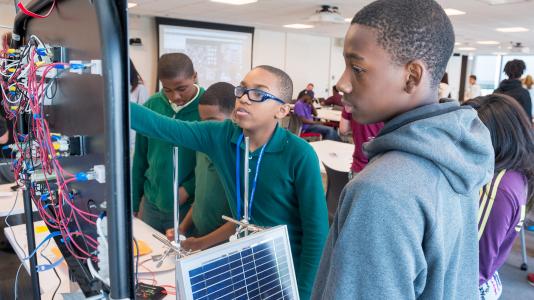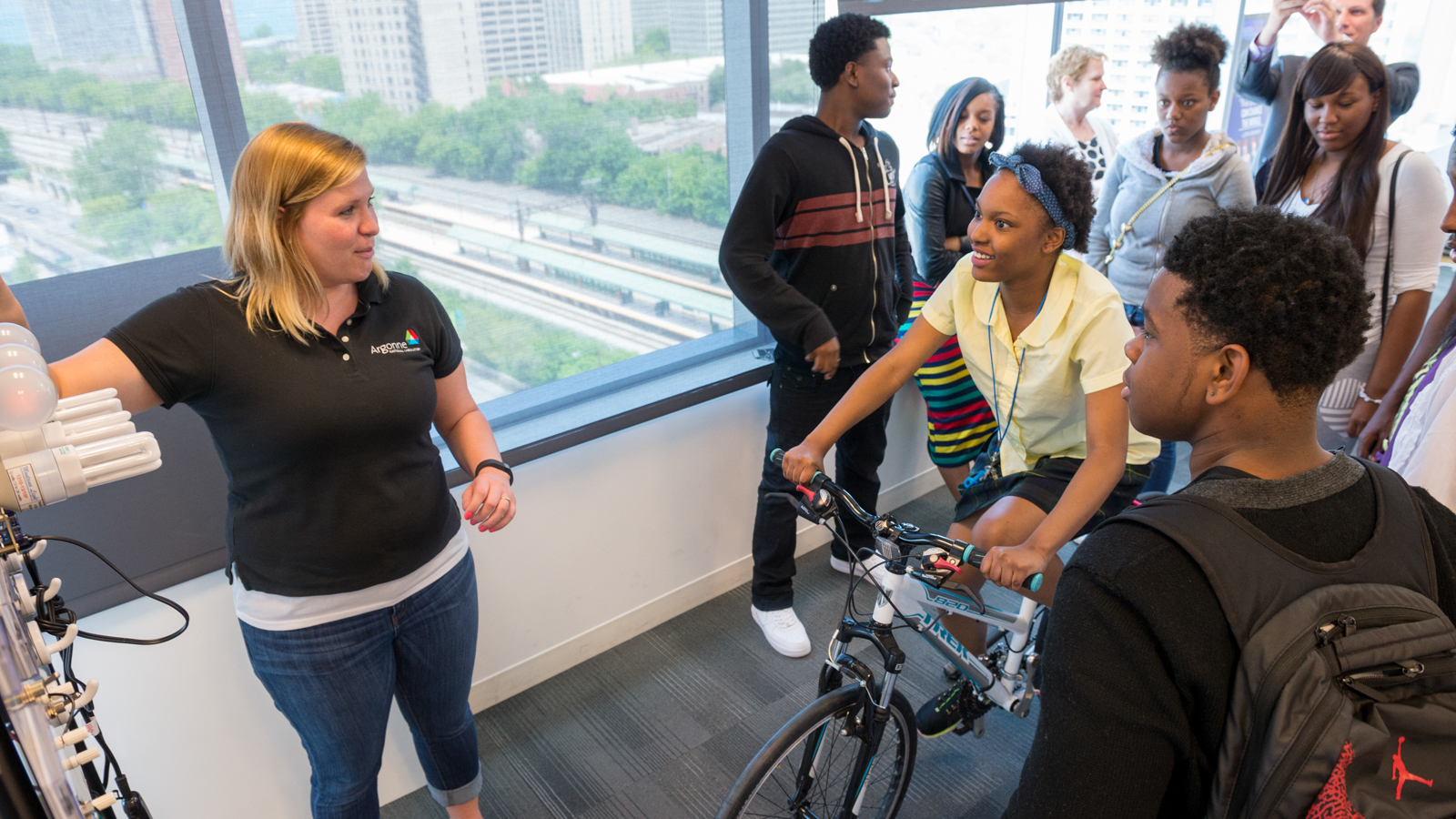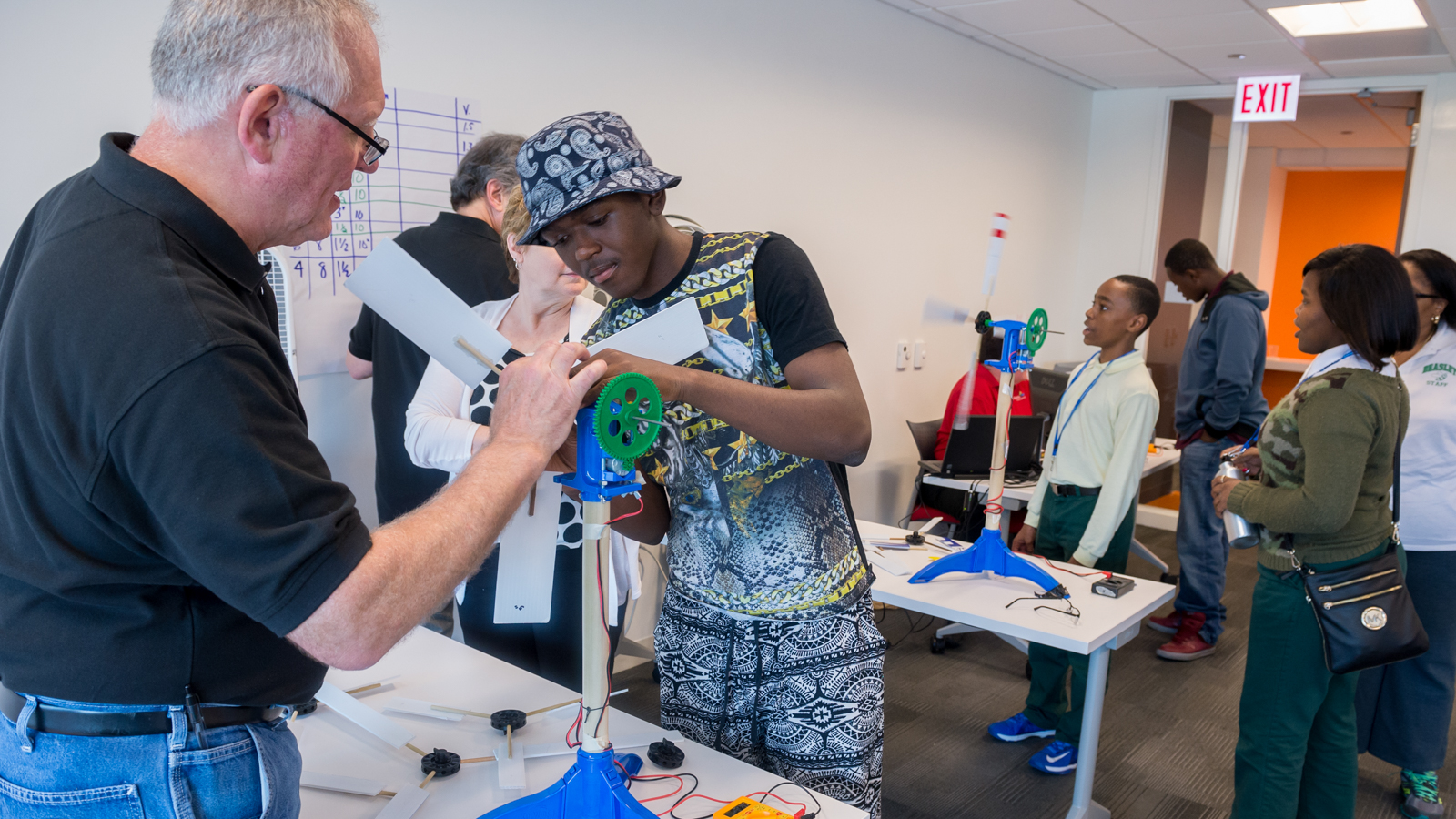
At “Charging up the Classroom,” an event sponsored by the Joint Center for Energy Storage Research (JCESR) and the education department at the Department of Energy’s Argonne National Laboratory, the Chicago Innovation Exchange and Clean Energy Trust, students learned about the uses of batteries, their possible future applications and how science, technology, engineering and mathematics (STEM) research can affect everyday life.
Students were introduced to the ways that STEM research, in partnership with industry, can improve everyday life. They had the opportunity to learn something new and consider a career in STEM as they continue to discover what they want to do with their lives.
At the event, students attended workshops as Argonne scientists explained how batteries work and discussed their research on new battery concepts. The presentations helped to show students that energy science can solve practical problems that will affect everyone in the future by increasing electric car mileage, reducing energy emissions and stabilizing the electric grid.
Lei Cheng, a JCESR scientist, led a workshop that not only showed the students how batteries work in a way that they can relate to, but also showed why America needs better energy storage technology. She introduced students to uses for batteries that are not necessarily intuitive.
“Before I joined JCESR, I didn’t think of applying energy storage technology to the electric grid,” said Cheng. “For example, we’re trying to switch to more renewable resources like wind or solar power. But the sun doesn’t shine all the time and the wind doesn’t blow all of the time. When everybody’s off work and it gets dark, they start to use electricity more. Because the demand is higher than the energy input at that time, we need to have a higher level of grid storage, so that when demand is high, we can still send energy to the grid.”
“These students are our future scientists, engineers and entrepreneurs and having early exposure to the cutting-edge battery research at Argonne helps them see possible pathways to a STEM career,” said Meridith Bruozas, manager of Educational Programs at Argonne.
The event also focused on the business aspects of battery science; Chicago business owners Anna Stork and Andrea Sreshta led a workshop on entrepreneurship.
Stork and Sreshta are the co-founders of Luminaid, a company that makes inflatable solar-powered lights. The two developed the product in response to the earthquake in Haiti after realizing that one of the greatest dangers after a disaster is not having light. Their lights are sold to disaster relief organizations in locations around the world.
“It all starts with an idea,” said Sreshta. “Science is where it begins, and businesses work to make the idea viable and accessible for the public. When you start off, you might not have all the resources or the funding, but if you have an idea that could help people, you shouldn’t let that get in your way.”
More information about educational programs at Argonne is available here.
Argonne National Laboratory seeks solutions to pressing national problems in science and technology. The nation’s first national laboratory, Argonne conducts leading-edge basic and applied scientific research in virtually every scientific discipline. Argonne researchers work closely with researchers from hundreds of companies, universities, and federal, state and municipal agencies to help them solve their specific problems, advance America’s scientific leadership and prepare the nation for a better future. With employees from more than 60 nations, Argonne is managed by UChicago Argonne, LLC for the U.S. Department of Energy’s Office of Science. For more, visit www.anl.gov.
The Department of Energy’s Office of Science is the single largest supporter of basic research in the physical sciences in the United States, and is working to address some of the most pressing challenges of our time. For more information, please visit science.energy.gov.

